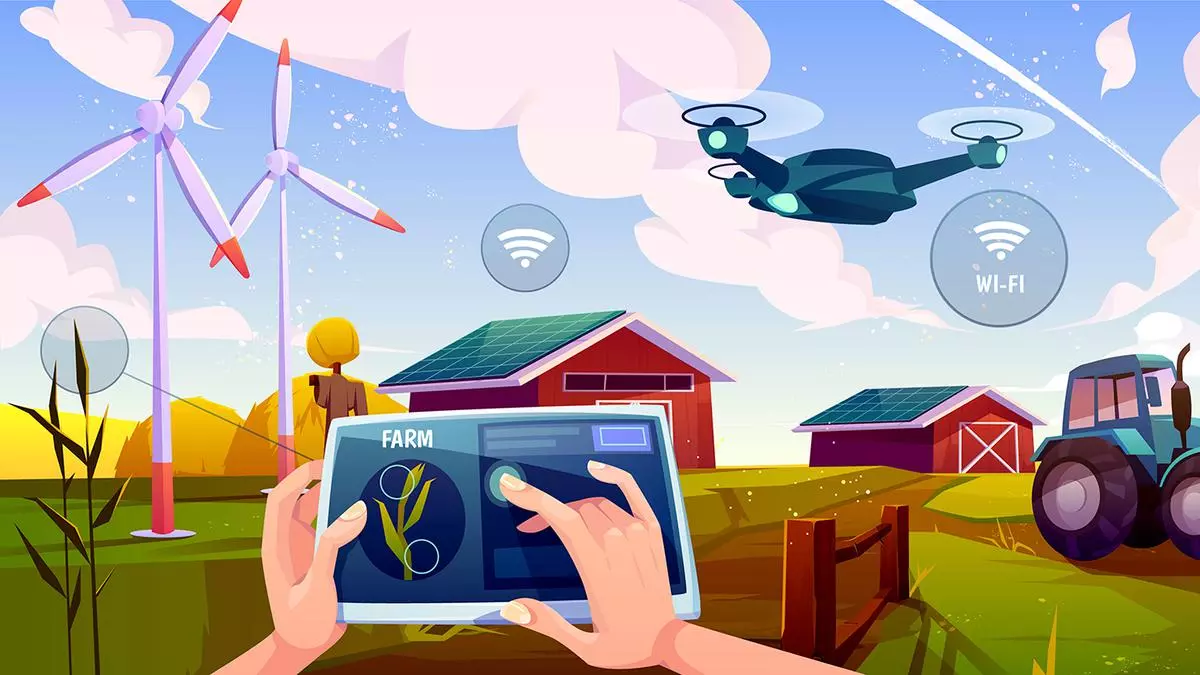Technology helping agri-business companies adopt sustainable practices
The world population is expected to reach 10 billion by 2050. On the other hand, rising costs of electricity, seeds, fertilizers, pesticides, transportation and rapidly depleting arable land are reducing the profit margins of the agribusiness sector. With higher incomes, consumers are more likely to buy food that is healthy, clean, traceable, and ethically grown. This article explores how agribusiness companies can adopt sustainable practices and enable their growth.
Agribusiness companies have additional responsibilities for responsible sourcing of crops, the ability to reuse waste from agricultural practices, the use of fully biodegradable or recyclable packaging, and overall waste reduction.
Farmers also have to protect their fields from wildfires, pests and diseases which are additional threats to the development of a sustainable agribusiness model as they affect food production and nutritional value. On the Road to Sustainability, all partners in the agribusiness ecosystem – from seed and chemical companies to farmers, logistics, banks and financial institutions, food trade and food producers and processors – are involved in many collaborations across industry and sectors to bring about healthy, clean and sustainable food. Traceable and ethically farmed for consumers.
Sustainable by design to pave the way for future engagements
Depending on their business priorities and current stage of technology adoption, agribusinesses will benefit from adopting a “sustainable by design” approach across their organization and in their partner network. The sustainable design approach will support the overall vision and enhance regulatory compliance and reporting in operational processes. It will also help drive sustainability as a core strategy for building products, processes and operating operations.
Most agribusiness organizations have invested heavily in enterprise resource planning (ERP), customer relationship management (CRM) and other manufacturing software and systems. However, it is difficult for companies to proactively address sustainability issues and mitigate risks.
Also read: Organic farming: a solution towards sustainable farming
To gain insight into issues related to energy and water consumption, organizations are embracing technology that specifically uses Ddata and Analytics. This is the use of intelligence to optimize consumption before it happens.
Digital twin technology is used to plan, design, and maintain manufacturing plants that process food, warehouses, terminals, and cold chains that store products. The goal is to reduce consumption of energy, water and other natural resources.
Transporting products increases harmful emissions and noise pollution and contributes more to climate change. Transportation service providers can use machine learning to track a route and then finalize the mode of transportation to reduce emissions. For example, using railways instead of trucks or using rivers and oceans as much as possible will certainly help. Emerging EV battery technology that allows higher range has made it easier to use electric vehicles to grow and transport produce.
Food packaging and design is one of the largest areas in which technology is used. Agribusiness companies are integrating digital technology with “in silico” approaches in the R&D function to create environmentally friendly packaging materials that are recyclable and can extend the life of packaged foods. Companies are also developing e-commerce marketplaces to buy back used plastic bottles, corrugated packaging materials, glass bottles and aluminum cans, allowing them to need less fresh materials.
Digital farming practices are gaining popularity. This includes the use of automated farm equipment, the use of remote sensing satellites to check the health of crops, and the use of soil sensors and weather stations to obtain advice on moisture and other water-related challenges. These technologies are becoming increasingly accessible to everyone. Along with “regenerative agriculture,” digital agriculture is helping the world sequester and capture more soil carbon.
Portfolio approach to technology and innovation
To drive technology adoption, agribusiness companies must first assess the areas where technology and innovation may have the most positive impact on humanity. Late Professor Clayton Christensen (served on the board of Tata Advisory Services) In his seminal work, The Innovator’s Dilemma suggested using a portfolio approach to technology and innovation.
Basically, as it applies to sustainability, so is it.
1. Strengthening the core business by building safe food products that help promote the health dimension of the consumer and are environmentally sustainable.
2. Serving today’s consumer in newer and more profitable ways – creating new food products with traceable, clean labels at competitive prices.
3. Find new customers by providing them with traceability and visibility of the products they buy.
4. Serve new customers in new ways by building technology tools, including personal feeding technology, smart food packaging and tracking, adoption of digital twin for food packaging and storage, etc.
Conclusion
No single agribusiness enterprise can create a sustainable future. There is an urgent need to reduce greenhouse gas (GHG) emissions from agricultural practices to make the whole process sustainable. However, due to the diversity of competing economic and social interests, the adoption of sustainable practices by agribusinesses around the world has remained diverse. We believe that sustainable practices can be adopted through the convergence of humanity, technology and innovation. The modern business model of the 21st century, requires companies to harness the potential of digital technologies while building mutually beneficial relationships with their partners, suppliers and consumers.
The author is Industry Consultant – Manufacturing, TCS
